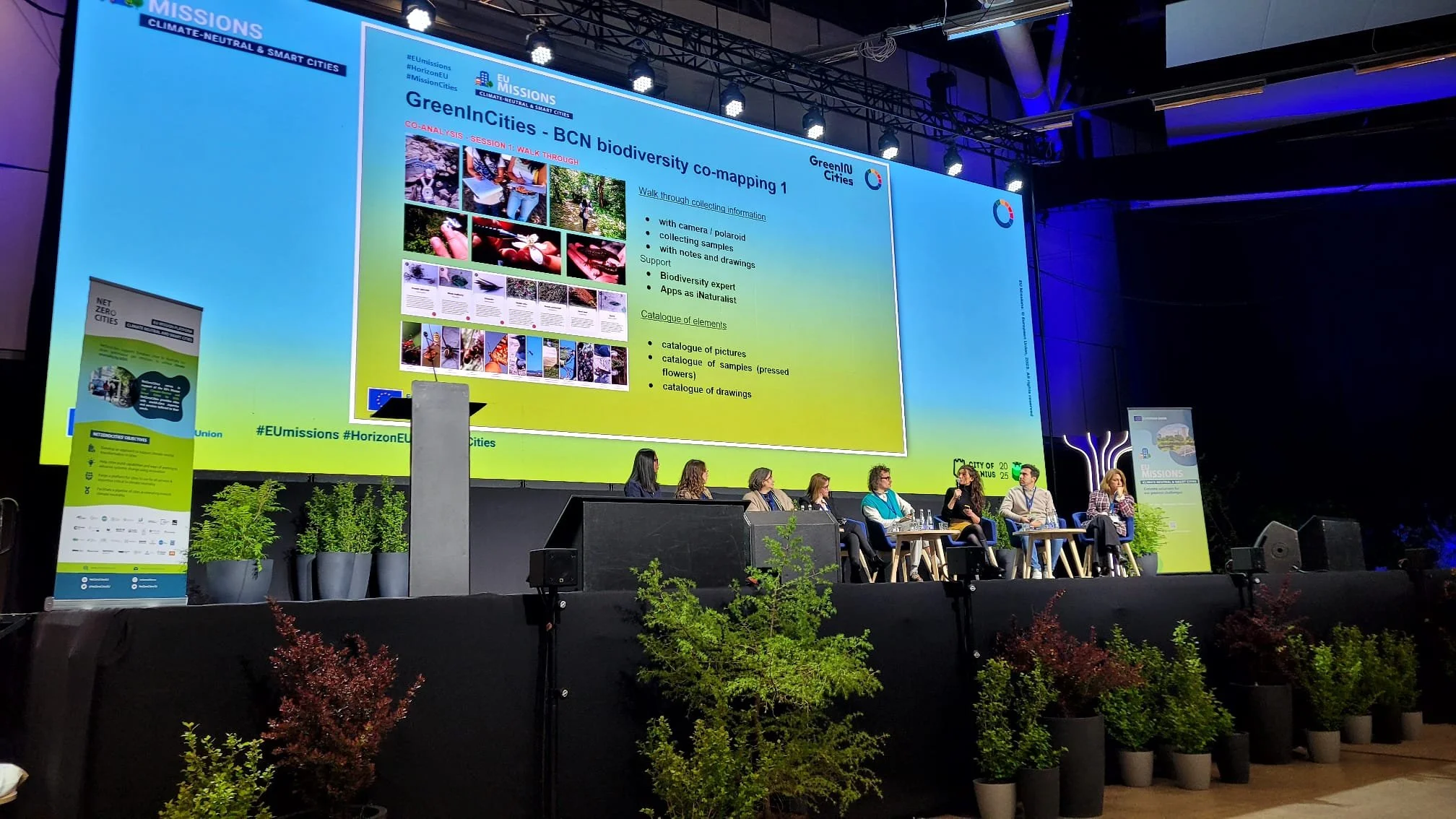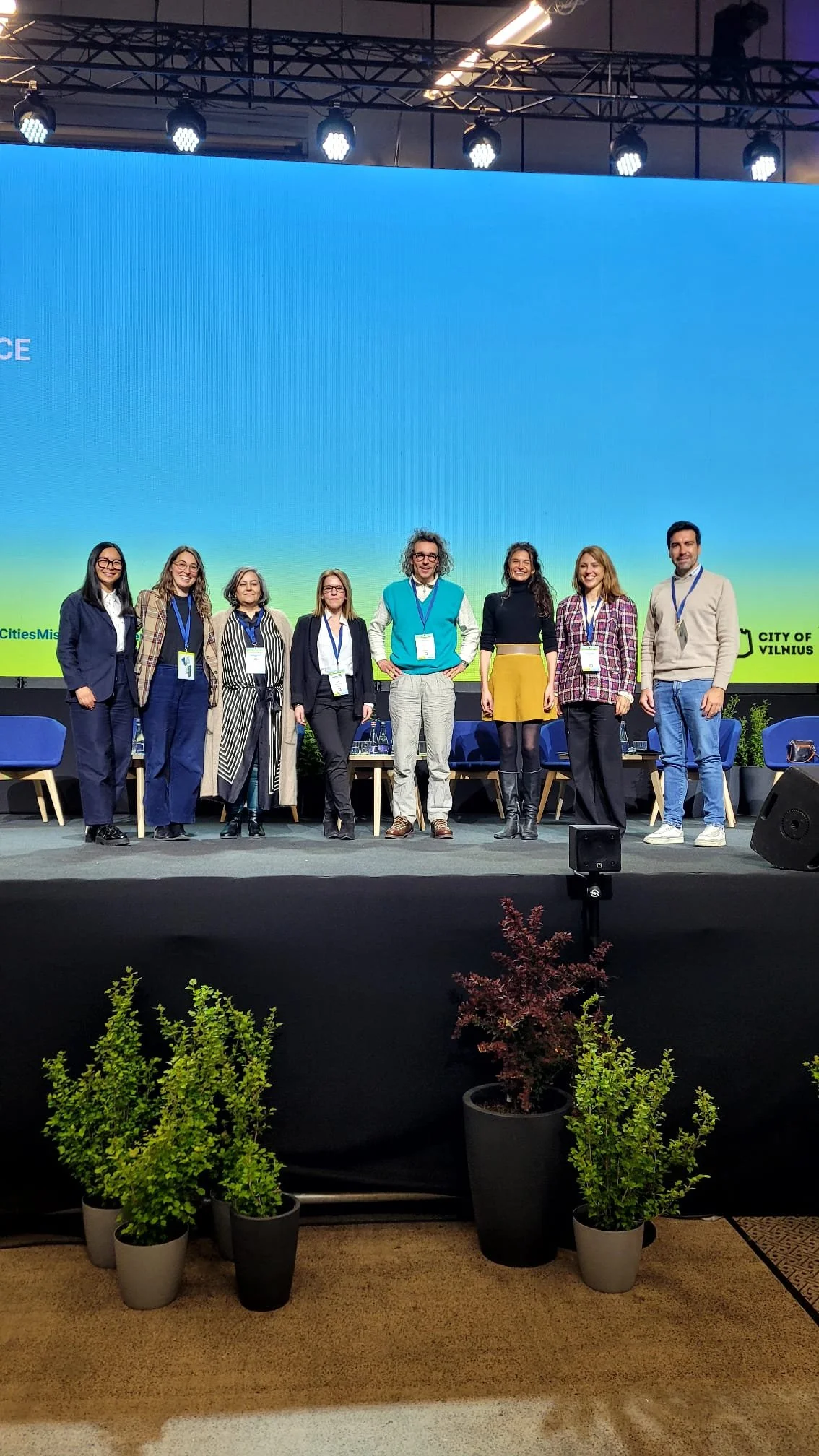Cities Mission Conference Vilnius 2025: Reflecting on methods, indicators and tools for inclusive and climate-neutral cities
“Empathy is important—for humans and non-humans. With this, we can implement solutions.”
Panel session - Photo by Lars Petrova-Taylor
As cities continue to grow, they face increasing pressure to respond to climate change, biodiversity loss, and social inequality. While the past decade has brought a better understanding of the link between climate challenges and urban planning, one central question remains:
How can we translate our understanding of climate challenges into inclusive, climate-neutral solutions that deliver real change on the ground?
This was the central question explored during the panel “Reflecting on methods, indicators and tools for inclusive and climate neutral cities”, held on 6 May 2025 at the Cities Mission Conference in Vilnius, organised by NetZeroCities.
The session brought together four Horizon Europe projects: GreenInCities, ReGreeneration, URBREATH, and DivAirCity.
Three of them—GreenInCities, ReGreeneration, and URBREATH—collaborate as part of the Urban Greening and Renaturing Cluster, which focuses on deploying Nature-Based Solutions (NbS) for urban regeneration. Although DivAirCity is not part of the cluster, it offered an essential perspective on the intersection of social inequality, health conditions, and air pollution in cities.
Two additional initiatives—Commit2Green and ClimaGen—have recently joined the cluster, contributing to its growing scope, though they were not present at the event.
Together, the Urban Greening and Renaturing Cluster is active in over 30 cities across Europe, advancing greening strategies that aim to reduce emissions, restore biodiversity, strengthen climate resilience, and promote public health and social cohesion.
GreenInCities: Planning with Empathy—for All Life
Representing GreenInCities, Chiara Farinea and Andrea Conserva from the Institute for Advanced Architecture of Catalonia (IAAC) shared a distinctive perspective:
How can we design cities that include not only people—but also nature as a co-inhabitant?
They presented the project’s methodology of co-analysis, co-design, and co-monitoring, which brings together local actors, scientific knowledge, and community processes to shape interventions that respond to both human and non-human needs.
In the Barcelona pilot site along the River Besòs, this means:
Mapping migratory birds, pollinators, and vegetation alongside urban heat islands and mobility flows;
Reusing on-site materials for sustainable infrastructure.
Creating climate shelters that offer cooling for people and habitats alike.
“Inclusion is not just about who participates, but also what we consider worthy of inclusion”
Lessons from the Renaturing Cluster and Beyond
ReGreeneration is building a digital tool ecosystem grounded in over 200 indicators, allowing cities to monitor the real impact of NbS at neighbourhood level—especially through the lens of the 15-minute city concept.
URBREATH shared its digital twin tools, co-design platforms, and participatory interfaces that allow citizens and policymakers to plan, simulate, and evaluate interventions collaboratively and in real-time.
DivAirCity, while not part of the cluster, offered powerful lessons on equitable engagement—highlighting how truly inclusive co-creation must adapt to different communities' languages, schedules, and access levels.
Beyond Metrics: Culture, Conflict, and Trust
While tools and indicators are essential, the panel also underscored the social and political dimensions of NbS implementation. The GreenInCities team noted that conflict and resistance often arise—not out of opposition to nature, but from competing expectations, fears of exclusion, or discomfort with change.
“Sometimes citizens express frustration—not because they don’t value green spaces, but because they don’t feel seen in the process,” Farinea explained.
This is where co-design plays a vital role: not just as a method, but as a cultural practice of negotiation, empathy, and collective imagination.
As we move toward the shared goal of climate-neutral and inclusive cities, the Urban Greening and Renaturing Cluster and its partners are demonstrating that solutions must be not only smart and scalable—but also rooted in empathy, local knowledge, and care for all life in the city.
Photo by Lars Petrova-Taylor
Photo by Lars Petrova-Taylor



